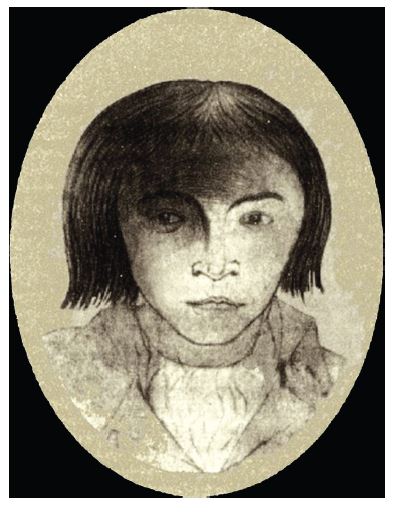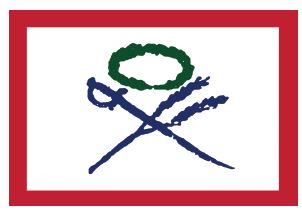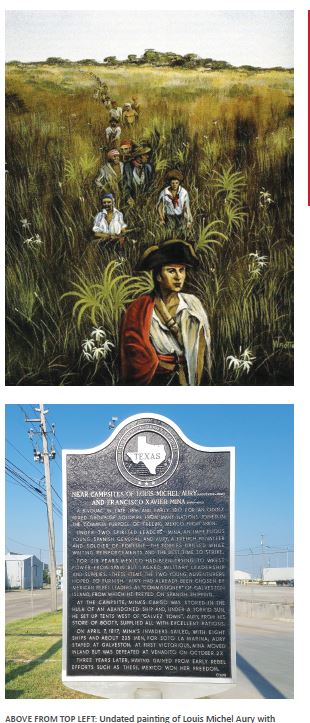 When people talk about pirates and Galveston, the name that usually comes to mind is the infamous Jean Laffite. But Laffite was not the first privateer to claim the island as his headquarters. That distinction belongs to Frenchman Louis Michel Aury (1788-1821) who came ashore in 1816.
When people talk about pirates and Galveston, the name that usually comes to mind is the infamous Jean Laffite. But Laffite was not the first privateer to claim the island as his headquarters. That distinction belongs to Frenchman Louis Michel Aury (1788-1821) who came ashore in 1816.
Born in Paris, Aury served in the French navy and on French privateer ships for eight years, which allowed him to accumulate enough wealth to become the master of his own vessels.
Often used as a generic term, a pirate is any person who uses the sea (or bay in this case) to commit theft, but there are subtle differences between pirates and privateers.
A privateer is an individual who is granted a license by a recognized government to attack shipping belonging to an enemy government, and keep a percentage (if not all) of the spoils for themself. A sort of private contractor, they are sometimes referred to as “pirates with papers.”
Aury fell in the latter category, as he preyed on Spanish shipping under the rationale of freeing Mexico from Spain’s rule. He arrived in Galveston on September 13, 1816, and he was declared to be commissioner of Galveston Island by Jose Manuel de Herrera, an official representative of Mexico.
The Galveston and Texas History Center of Rosenberg Library has copies of two letters from Aury to his brother in France and one from Capt. H. Sterling to Maj. Gen. James Wilkerson about Aury’s presence in Galveston. They are copies of originals held by the library of the University of Texas at Austin.
In one of the letters, Aury described himself as “fortune’s plaything” after leaving France and claiming allegiance to the Spanish provinces in the new world seeking independence from Spain.
Though his settlement in Galveston consisted mainly of tents on the sand, Aury spent nearly a year on the eastern promontory of the island where he commanded eight ships and cannon batteries.
The many conquests achieved by Aury and his crews in the gulf included a cargo of coins and indigo worth about $778,000. He also captured a number of Spanish galleons, reselling their cargo of enslaved people in New Orleans and sharing the profit with his men.
Once captured, the slaves were kept in a stockade until they could be smuggled by land or sea. The price quoted to traders was one dollar per pound, or an average of $140 per person. The heinous but lucrative venture provided ample funds for the burgeoning revolutionary government, as well as Aury’s men, who received their rewards monthly.
The commander looked the other way when some of his followers used their advantage to attack ships outside of the agreement, including two United States vessels.
Aury’s control of the island was disturbed by the arrival of Spanish revolutionist Francisco Xavier Mina (1789-1817) on November 22, 1816, with about 140 officers and men. After initial disagreements, they proceeded to work together to undermine Spain’s control in the area.
The joined forces swelled to 300 soldiers from several nations and approximately a dozen ships. Aury supplied the group with rations from his store of plunder, and Mina stored his cargo in the hulk of an abandoned ship on the shore.
 Mina left for New Orleans the following February to consult with associates and returned a month later with re-enforcements, two additional ships and a plan to invade Mexico at the Soto la Marina River. An arrangement was made to establish Aury as naval commander of the expedition, and Mina as commander of the military.
Mina left for New Orleans the following February to consult with associates and returned a month later with re-enforcements, two additional ships and a plan to invade Mexico at the Soto la Marina River. An arrangement was made to establish Aury as naval commander of the expedition, and Mina as commander of the military.
The forces left Galveston on April 7, 1817, with eight ships and 235 men, leaving a “skeleton crew” at the fort. Initially achieving small victories, Mina pressed further into Mexico and Aury left to return to Galveston.
 While Aury was away from Galveston, the Laffite brothers, Pierre and Jean, took over control of the island, swearing allegiance as agents for Spain. They wasted no time in establishing their smuggling operations on site and renamed the settlement as Campeche.
While Aury was away from Galveston, the Laffite brothers, Pierre and Jean, took over control of the island, swearing allegiance as agents for Spain. They wasted no time in establishing their smuggling operations on site and renamed the settlement as Campeche.
Seeing that many of his men had deserted and unable to either regain control of the compound or establish a treaty with the Laffites, Aury resigned his commission to rule Galveston on July 31, 1817.
Continuing with the cause against Spain, he sailed to the Florida coast to join Gregor McGregor, authorized agent of the rebel colonies of Venezuela, New Grenada (Colombia), Mexico, and La Plata (Argentina), in attacking Spanish Florida from Amelia Island.
On October 27, Mina and his men were defeated and captured in Mexico near Venadito. He was taken to Mexico City, tried and executed at Fort San Gregorio with twenty-five companions two weeks later, at the age of twenty-eight.
Aury captured Old Providence Island in the Caribbean Sea on July 4, 1818. He continued to fight from that vantage point, but he had few successes. He is believed to have died there on August 30, 1821, suffering injuries from falling from a horse at the age of thirty-three, but some sources state that he was living in Havana in 1845.
The site marked on an 1816 map as Aury’s “fuerta” or fort abandoned by the privateer in Galveston encompasses part of Harborside Drive today, where the ruins known as Laffite’s Maison Rouge are located.
In reality, although Laffite did build on land previously occupied by Aury, he burned his own Maison Rouge and the rest of Campeche when he left the island in May 1820. The ruins visible today are those of a house built by sea captain William Hendrick in 1870 over the old cellars of Maison Rouge, which was said to be designed as a replica of Laffite’s home.
The location can be seen at 1417 Harborside Drive, designated with a Texas State Historical Marker.
Whether Aury, Mina, and the Laffites were actually pirates or privateers remains debatable, but their legends still have a stronghold on Galveston Island.